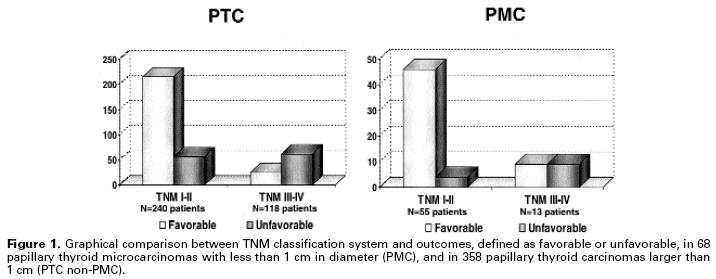The large use of simple and effective diagnostic tools has significantly contributed to the increase in diagnosis of thyroid cancer over the past years. However, there is compelling evidence that most micropapillary carcinomas have an indolent behavior and may never evolve into clinical cancers. Therefore, there is an urgent need for new tools able to predict which thyroid cancers will remain silent, and which thyroid cancers will present an aggressive behavior. There are a number of well-established clinical predictors of malignancy and recent studies have suggested that some of the patient’s laboratory data and image methods may be useful. Molecular markers have also been increasingly tested and some of them appear to be very promising, such as BRAF, a few GST genes and p53 polymorphisms. In addition, modern tools, such as immunocytochemical markers, and the measure of the fractal nature of chromatin organization may increase the specificity of the pathological diagnosis of malignancy and help ascertain the prognosis. Guidelines designed to select nodules for further evaluation, as well as new methods aimed at distinguishing carcinomas of higher aggressiveness among the usually indolent thyroid tumors are an utmost necessity.
Predisposition factors; Environment; Susceptibility genes; Outcome





